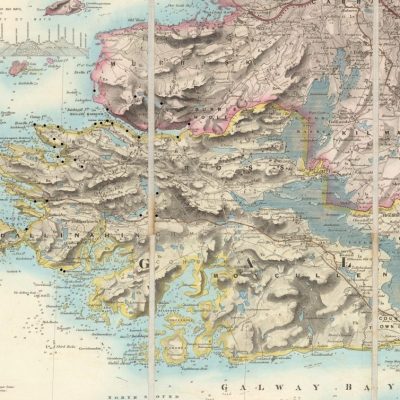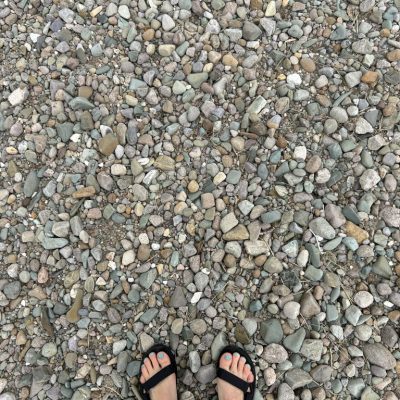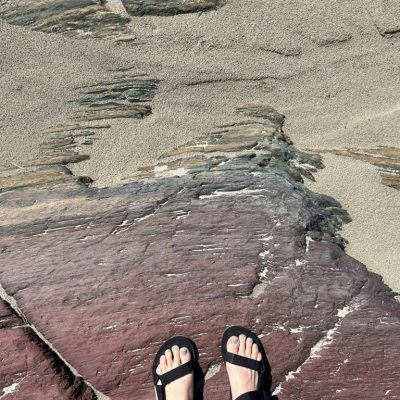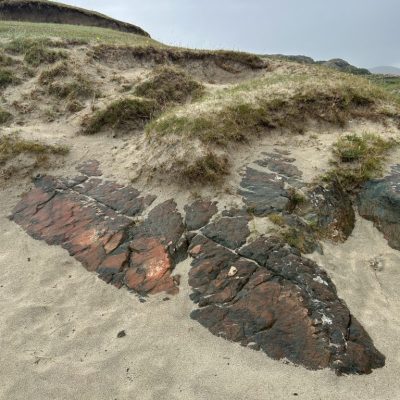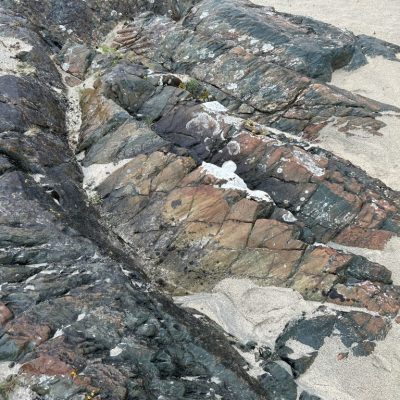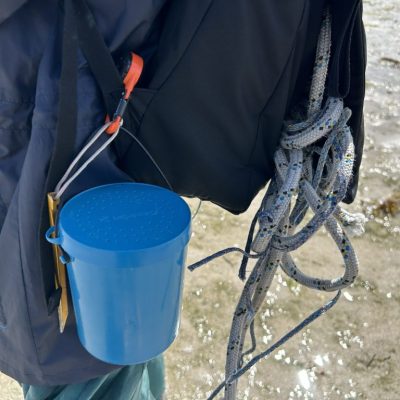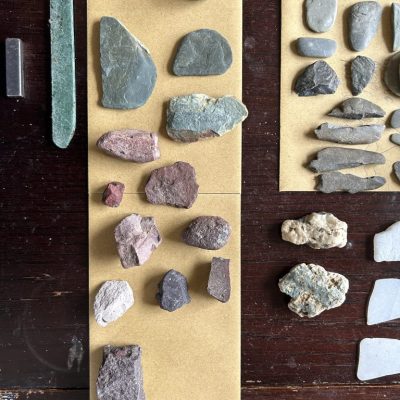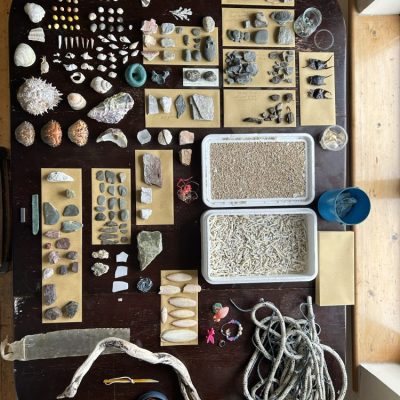I came to Connemara in search of ferromagnetic rocks. They are usually black and heavy. They sometimes are lighter and glittering. They are good friends with fool’s gold, pyrite, the one that pretends to be someone else.
No black rock was attracted to my magnet in the surroundings of the studio at Glynsk. Only pieces of green marble. Transparent, light moss-like green. I left them behind.
As I moved further, hilltops were made of white and sharp plate-like pieces of quartz. Super thin layers of ferromagnetic glitter went into my pockets. In the end, after packing my bags, I left them behind.
Magnetite, the basic component of ferromagnetic rocks, is responsible for magnetoreception in most alive organisms, including fish, bacteria, dogs, and humans. It’s a sense. And for years now I’ve been working on the choreography on how to train it. The law of attraction, gravity, and the movement of the Moon and Earth, all come into the process together with the discipline, repetition, and spontaneous acts based on layers of poetry and crazy beliefs.
So, instead of climbing upwards with a magnet, I went after the tides of the ocean.
The sharp shoreline at the bottom of Tully Mountain was greenish sandstones, with pieces of violet quartz I’d never seen before.
The background of Mweelrea was greenish-red and dark red and perfect shale red back from the Salrock formation.
The further I went into the Mayo region, the more amazing colours appeared. As if rainbow dragons were laying under the sand, waiting for the ocean to cover their backs. Greenish-yellow, pink, purple, and red rocks were filling the landscape.
I started to count the hours and heights of the tides, looking at the moon charts. It felt funny and almost esoteric in the beginning. But at the end of the month, it felt normal, almost natural.
The conclusion? Reds and greens and even pinks here are ferromagnetic. Not the blacks. The colour of the sense became warmer and more alive-like.
Share:
